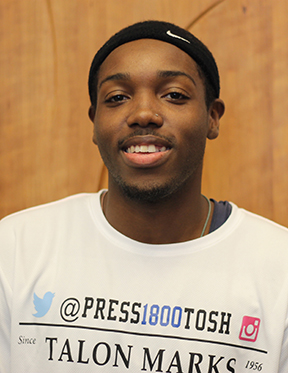Young people are going to great lengths to look like popular celebrities.
Their measures include: The application of makeup, excessive working out — extreme diets, some even take it a step further with surgery and implants.
Keep It Real, a movement formed to help young people feel comfortable in their own skin, states that, “53 percent of 13-year-old girls have issues with how their bodies look.”
A percentage of that then “rises to 78 percent when girls turn 17.”
Although, women are most likely to experience the pressure of having to look a certain way, young men struggle similarly with society wanting them to be buff and have a six-pack.
According to, Mayo Clinic, body dysmorphic disorder, is a condition in which someone obsessively thinks about their image.
Cognitive therapy or medications are two leading forms of “help” that are usually offered to people who suffer from dysmorphia.
However, change must start with three groups — famous people, parents and the people and companies that have the most influence on youth (magazines, clothing companies, models).
This is something that has to be kept under control because in the age of social media, body trends can spread like a virtual wildfire.
Kylie Jenner, who has recently attracted an enormous amount of popularity due to her newfound assets, is probably the top example for a young person feeling the pressure of needing to look a certain way.
Like her older sister, Kim Kardashian, she has been accused of having lip injections and breast and butt implants, amongst other presumed procedures.
Unfortunately, her body has created a goal for girls her age or younger to look up to.
On social media it is evident, as you can see girls with unnatural-looking plump lips and a Kylie Jenner booty getting tons of attention.
Growing Wireless lists many statistics of adolescents and the wireless world.
One statistic says that 56 percent of teens say that photos of themselves receive the most likes compared to other posts.
Those are also the type of pictures that are most subjected to body-shaming and bullying by their peers and virtually anyone with a social media account.
There’s also a story that is trending in the media about an Iranian teen-aged woman who allegedly underwent over 50 surgeries to look like Angelina Jolie.
However, some say that she actually just used makeup, prosthetics and photoshop to alter her appearance.
Despite negative comments such as naming her the “corpse’s bride,” a “zombie” or “something straight from a Tim Burton film,” she still has amassed over 300,000 followers on her Instagram account.
Her case is a prime example of the media enabling an adolescent to change their appearance to resemble someone who is universally considered attractive or famous.
When someone gains over a quarter of a million followers on Instagram because they look like a celebrity, it would be hard to dispute the statement that media enables young people to change their appearance.
Young people ages 6 to 25-years-old see people in their age bracket on popular sites like YouTube or Instagram who are gaining rapid fame and fortune because they made a significant body modification.
So they themselves deem it acceptable, because society tends to glorify these people who are actually suffering from the mental disorder known as dysmorphia.
At the end of the day, we should be teaching young people that it’s cool to be yourself, being unique is far more interesting than being a clone.










